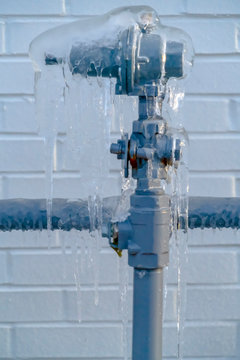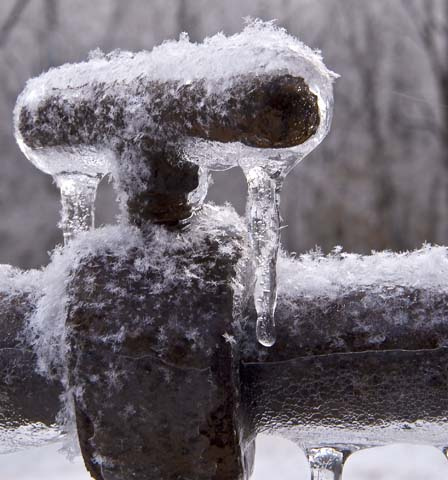Advice for Preventing Frozen Plumbing in Cold Weather: Expert Tips
Advice for Preventing Frozen Plumbing in Cold Weather: Expert Tips
Blog Article
Are you on the lookout for details around How to prepare your home plumbing for winter weather?

Winter can damage your pipes, specifically by freezing pipelines. Below's exactly how to prevent it from occurring and what to do if it does.
Intro
As temperatures decrease, the risk of frozen pipes boosts, possibly resulting in costly repair work and water damage. Comprehending just how to prevent frozen pipelines is essential for homeowners in cool environments.
Comprehending Icy Pipelines
What triggers pipes to freeze?
Pipes ice up when revealed to temperature levels listed below 32 ° F (0 ° C) for expanded periods. As water inside the pipelines freezes, it increases, taxing the pipe wall surfaces and possibly causing them to rupture.
Threats and damages
Frozen pipelines can cause supply of water interruptions, property damages, and expensive repairs. Burst pipes can flooding homes and trigger considerable structural damage.
Signs of Frozen Piping
Determining frozen pipelines early can avoid them from breaking.
Just how to recognize icy pipelines
Search for decreased water flow from taps, uncommon odors or noises from pipelines, and visible frost on exposed pipelines.
Avoidance Tips
Insulating vulnerable pipelines
Wrap pipelines in insulation sleeves or utilize heat tape to shield them from freezing temperatures. Concentrate on pipes in unheated or exterior locations of the home.
Home heating strategies
Maintain indoor rooms sufficiently heated up, particularly areas with plumbing. Open cabinet doors to permit cozy air to flow around pipelines under sinks.
Securing Outside Plumbing
Yard tubes and exterior faucets
Separate and drain garden hoses prior to winter. Mount frost-proof spigots or cover outside faucets with insulated caps.
What to Do If Your Pipes Freeze
Immediate activities to take
If you think icy pipelines, keep taps available to relieve pressure as the ice thaws. Utilize a hairdryer or towels taken in warm water to thaw pipelines gradually.
Long-Term Solutions
Structural adjustments
Consider rerouting pipes far from outside walls or unheated locations. Include additional insulation to attics, cellars, and crawl spaces.
Upgrading insulation
Invest in high-quality insulation for pipelines, attics, and wall surfaces. Appropriate insulation helps keep constant temperature levels and minimizes the risk of icy pipes.
Final thought
Avoiding icy pipes needs proactive steps and fast reactions. By recognizing the causes, indications, and safety nets, homeowners can safeguard their pipes throughout cold weather.
6 Proven Ways to Prevent Frozen Pipes and Protect Your Home
Disconnect and Drain Garden Hoses
Before winter arrives, start by disconnecting your garden hoses and draining any remaining water. Close the shut-off valves that supply outdoor hose bibs and leave the outdoor faucet open to allow any residual water to drain. For extra protection, consider using faucet covers throughout the colder months. It’s also important to drain water from any sprinkler supply lines following the manufacturer’s directions.
Insulate Exposed Pipes
Insulating your pipes is an effective way to prevent freezing. Pipe insulation is readily available at home improvement stores and is relatively inexpensive. Pay close attention to pipes in unheated areas such as the attic, basement, crawl spaces, or garage. Apply foam insulation generously to create a buffer against the cold. You can also wrap your pipes in heat tape or thermostat-controlled heat cables for added warmth.
Seal Air Leaks
Inspect your home for any cracks or openings that could let in cold air. Seal any holes around the piping in interior or exterior walls, as well as the sill plates where your home rests on its foundation. Additionally, make sure to keep your garage door closed unless you’re entering or exiting. Leaving it open creates a significant air leak that can lead to frozen pipes.
Allow Warm Air Circulation
During cold snaps, it’s essential to allow warm air to circulate evenly throughout your home. Leave interior doors ajar to promote better airflow. Open kitchen and bathroom cabinets to help distribute heat consistently around the rooms. If you have small children or pets, be sure to remove any household chemicals or potentially harmful cleaners from open cabinets for safety.
Let Faucets Drip
A small trickle of water can make a big difference in preventing ice formation inside your pipes. When temperatures drop significantly, start a drip of water from all faucets served by exposed pipes. This continuous flow helps prevent the water from freezing. Additionally, running a few faucets slightly can relieve pressure inside the pipes, reducing the chances of a rupture if the water inside does freeze.
https://choateshvac.com/6-proven-ways-to-prevent-frozen-pipes-and-protect-your-home/

Do you appreciate more info about How to prepare your home plumbing for winter weather? Make a review further down. We will be pleased to listen to your reactions about this page. We hope to see you back again in the future. Feel free to take a moment to share this page if you appreciated it. Kudos for your time. Return soon.
Explore Report this page